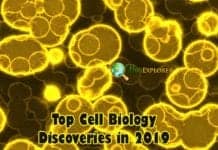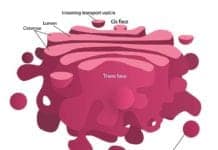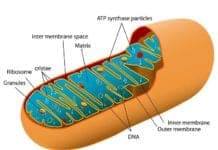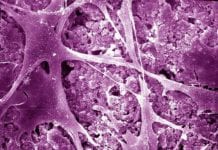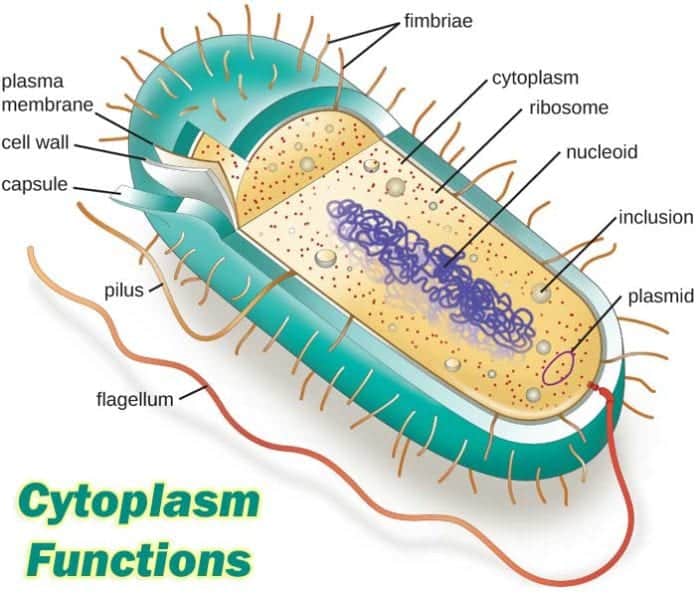
Cytoplasm Functions: Every cell in an organism is comprised of a fluid that fills the cell and is surrounded by a cell membrane. This fluid is called the cytoplasm or the cytosol. The word cytoplasm is derived from the word “cyto” meaning cell and “plasm” meaning fluid; cytosol means substance of the cell.
The cytoplasm is a viscous solution that contains a combination of different salts and proteins, as well as water. The cytoplasm is dense and viscous, comprising 80% of water, and is made up of a scaffold of structural proteins that define the cytoskeleton of the cell, giving it its shape.
The cytoskeleton comprises microtubules and microfilaments that make up the structure of the cell, and the interspersed spaces are filled with the cytoplasm. Both the cytoplasm and the cytoskeleton give rigidity and structure to the cell. A cell also contains various organelles. These organelles are located in the cytoplasm.
Table of Contents
- Types and Processes of the Cytoplasm
- Constituents of the Cytoplasm
- Physical and Chemical features of the Cytoplasm
- Functions of the Cytoplasm
- 1. Synthesis of Molecules and Biochemical Pathways
- 2. Growth
- 3. Medium for Organelles
- 4. Removal of Waste Products
- 5. Shape and Structure
- 6. Cell Movement
- 7. Transport of Genetic Material
- 8. Metabolism
- 9. Protection
- 10. Barrier Between Organelles
- 11. Storage
- 12. Cell Division
- 13. Four Additional Cytoplasm Functions
Types and Processes of the Cytoplasm
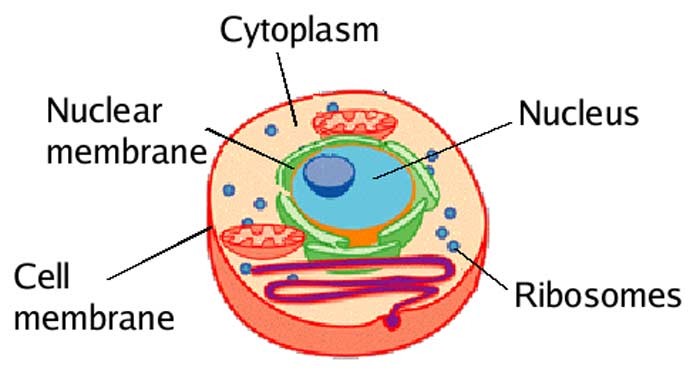
The cytoplasm can be divided into two parts – the ectoplasm and the endoplasm. The ectoplasm covers the peripheral area of the cell, whereas the endoplasm contains the central portion with all the organelles. In Prokaryotic cells, all the contents of the cell are present in the cytoplasm. Prokaryotic cells do not possess membrane-bound organelles.
The movement of cytoplasm, which results in circulation of cellular substances around and within the cell is termed as cyclosis. It is also known as cytoplasmic streaming. Cyclosis is seen in some plant cells, and protozoans, such as amoeba, are caused by certain hormones or chemicals. Amoeba uses the process of cytoplasmic streaming for movement and capture of food. Other cells use this process during the process of cell division, meiosis or mitosis, that results in the formation of daughter cells.
Apart from the cytoplasm, two other terms are commonly used – nucleoplasm and protoplasm. Nucleoplasm refers to the fluid that fills the interior of the nucleus with contains the genetic material. Protoplasm refers to the entire content of the cell, including the nucleoplasm and the cytoplasm.
![]()
Constituents of the Cytoplasm
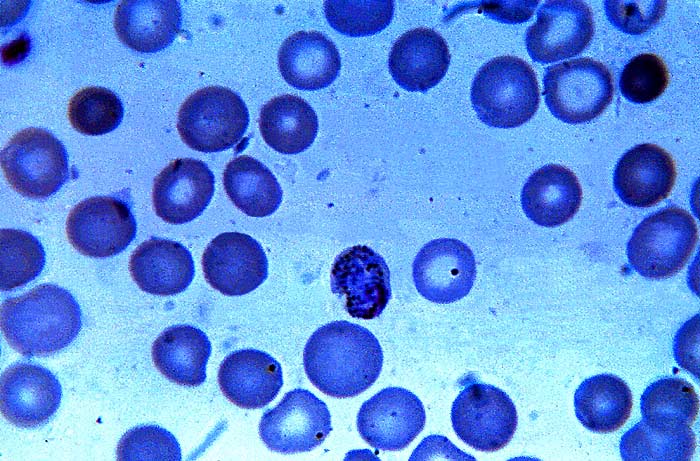
The cytoplasm contains three major elements:
- Cytosol: The part of the cytoplasm that is not included within organelles is called the cytosol. It comprises microfilaments and microtubules that define the cell’s cytoskeleton, proteins, and water. It also contains small molecules and structures such as ribosomes and proteosomes.
- Organelles: Organelles are usually membrane-bound structures that have defined a function within the cell. These are located in the cytoplasm, for example, Mitochondria, Endoplasmic reticulum, Golgi Apparatus, Vacuoles, lysosomes, Nucleus, etc.
- Cytoplasmic Intrusions: Cytoplasmic intrusions are typically insoluble small molecules or granules present in the cytoplasm. The types of cytoplasmic intrusion present in the cell differ from cell to cell. Example of cytoplasmic intrusions includes starch molecules, glycogen, small lipids, etc.
![]()
Physical and Chemical features of the Cytoplasm
The physical nature of the cytoplasm is colloidal and contains a mixture of insoluble granules and organic substances. The outer layer, called the ectoplasm, near the periphery, is called plasmogel due to its thick and jelly-like nature. The area of the cytoplasm near the nucleus is called the plamosol and is less viscous in nature. 20-50% of cytoplasmic proteins like enzymes. Animal and plant cytoplasms differ by a small margin regarding chemical content.
![]()
Functions of the Cytoplasm
1. Synthesis of Molecules and Biochemical Pathways
The Cytoplasm serves as the site for the synthesis of many important molecules that a cell needs to function and survive. Some key examples include:
- Proteins: Ribosomes present in the cytoplasm are responsible for protein synthesis. Messenger RNA carries the genetic code from the DNA in the nucleus to the ribosomes, which then link amino acids together into polypeptide chains that fold into functional proteins. Nearly all of a cell’s proteins are produced in the cytoplasm.
- Lipids: While lipids have diverse structures and functions, such as fats, waxes, and steroids, they share the common feature of hydrophobicity. Enzymes in the cytoplasm assemble the hydrophilic heads and hydrophobic tails of lipid molecules. Micelles and vesicles transport lipids between organelles.
- Carbohydrates: Glucose, glycogen and other carbohydrates are synthesized in the cytoplasm from smaller precursors. Carbohydrate metabolism pathways like glycolysis also occur partially in the cytoplasm.
In addition to manufacturing specific molecules, the cytoplasm hosts full multi-step biochemical pathways that are vital for the cell. For example:
- Glycolysis: This metabolic pathway breaks down glucose into pyruvate and nets a small amount of ATP (adenosine triphosphate) energy. The first half of glycolysis uses cytoplasmic enzymes to phosphorylate glucose and split it into two 3-carbon molecules.
- Fatty Acid Synthesis: This anabolic process condenses acetyl CoA (coenzyme A) units into long fatty acid chains inside the cytoplasm. NADPH (nicotinamide adenine dinucleotide phosphate) provides the reducing power.
So in summary, the aqueous cytoplasm provides an ideal environment for assembling the molecular building blocks of life – proteins, carbs, lipids, and more. Its dissolved enzymes facilitate crucial biosynthetic pathways like glycolysis.
![]()
2. Growth
The cytoplasm plays a key role in the growth and expansion of cell size. It works together with the cell membrane to enable the cell to grow larger. Some specific ways the cytoplasm contributes to cell growth include:
- The cytoplasm contains actin filaments and microtubules that assemble and disassemble in order to push the plasma membrane outward as the cell grows.
- Enzymes like DNA polymerase in the cytoplasm aid in replicating the cell’s DNA as the cell grows and prepares to divide. This ensures there is enough genetic material for the new daughter cells.
- The cytoplasm provides raw materials like amino acids and nucleosides to build new cellular components needed for a larger cell size.
- As the cell surface area expands, additional phospholipids must be synthesized in the cytoplasm to maintain membrane integrity.
- The fluid nature of the cytoplasm allows organelles to move and be distributed throughout the expanding volume of the cell.
- Growth factors present in the cytoplasm stimulate the production of proteins, lipids and carbohydrates needed for cell growth.
So in summary, the dynamic cytoplasm supplies the framework, raw materials, and biochemical molecules required to support cell growth. It coordinates expansion of cell components and the plasma membrane.
![]()
3. Medium for Organelles
The cytoplasm provides an aqueous gel-like medium that suspends organelles and enables their movement and interaction. Specific aspects of how the cytoplasm mediates organelle function include:
- The watery consistency of the cytoplasm allows organelles to remain suspended within it. The cytoplasm prevents organelles from settling to the bottom of the cell through its viscosity.
- Cytoskeletal elements like microtubules and actin filaments organize the location of organelles within the cytoplasmic medium.
- The cytoplasm facilitates the transport of materials like proteins, lipids, and secretory products between organelles through either passive diffusion or active transport on cytoskeletal tracks.
- As a hydrophilic medium, the cytoplasm provides an environment suitable for the many biochemical reactions occurring within organelles. Enzymes and other hydrophilic substances are soluble.
- Organelles with their own membrane-bound compartments like lysosomes can function as isolated environments because the cytoplasm acts as a barrier keeping the organelles separated.
- The cytoplasm contains metabolites, nucleotides, ions, and other raw materials that organelles need to synthesize macromolecules and carry out their functions.
- Changes in the ionic composition or pH of the cytoplasm rapidly impact the functioning of organelles through shifts in molecular gradients and charges.
In summary, the aqueous, organized, and dynamically responsive cytoplasm enables suspended organelles to exist, interact, and carry out the collective functions that keep the cell alive.
![]()
4. Removal of Waste Products
The cytoplasm aids in collecting, storing, and removing waste products and excess materials from the cell. Key ways it accomplishes this include:
- Vesicles and vacuoles within the cytoplasm phagocytose and encapsulate waste materials, isolating them from the rest of the cell.
- Lysosomes contain hydrolytic enzymes that break down waste contents like proteins, lipids, and damaged organelles engulfed by phagosomes in the cytoplasm.
- The cytoplasm contains Proteasomes that degrade unneeded proteins into amino acids for reuse or removal.
- Peroxisomes in the cytoplasm detoxify and break down harmful compounds like alcohol and fatty acids. The byproducts are safely removed from the cell.
- The fluid nature of the cytoplasm allows the movement of waste-containing vesicles toward the plasma membrane for exocytosis.
- During exocytosis, the membranes of waste vesicles fuse with the cell membrane and release contents out of the cell into the external environment.
- Channels and transporters in the cytoplasmic membrane pump out excess water, ions, and metabolic byproducts.
In summary, the cytoplasm provides an organized highway for waste movement, compartments for storage, and machinery to break down wastes for safe removal from the cell through exocytosis or membrane transport.
![]()
5. Shape and Structure
The cytoplasm helps provide both the rigid and flexible properties that determine overall cell shape and structure. Key ways it does this include:
- The cytoplasm contains a network of microtubules that are rigid hollow rods radiating throughout the cell. This cytoskeleton framework establishes cell shape.
- Actin microfilaments woven through the cytoplasm provide structural support while still allowing flexibility in cell shape.
- The variable viscosity and gel-like nature of the cytoplasm allows it to hold the organelles in position while still permitting their movement when needed.
- The centrosome organizes microtubule assembly/disassembly and is located in the cytoplasm, helping orient cell structure.
- Motor proteins like dynein and kinesin walk along microtubules in the cytoplasm, facilitating organelle transport to maintain the cell’s structural organization.
- Changes in osmotic pressure that cause water to move into or out of the cytoplasm rapidly modify cell shape and size through cytoplasmic flow.
- In some cells like leukocytes, rearrangement of cytoplasmic actin allows temporary shape shifts required for immune function.
In summary, the dynamic semi-solid nature of the cytoplasm, along with its cytoskeletal elements, enables it to both establish and alter cell shape as needed while providing structural integrity.
![]()
6. Cell Movement
The cytoplasm facilitates cell movement in several key ways:
- In amoeboid cells like macrophages, the cytoplasm flows to form pseudopods and filopods that allow the cell to engulf particles and crawl along surfaces.
- The cytoskeletal proteins actin and myosin in the cytoplasm interact to produce the contractions that propel cell crawling. This is known as cytoplasmic streaming.
- Microtubules in the cytoplasm help orient the origin and direction of cell movements by establishing cell polarity.
- Interactions between actin filaments and myosin in the cytoplasm enable changes in cell shape that underlie movement behaviors like gliding motility.
- The viscosity and sol-gel nature of the cytoplasm enables reversible transitions between solid and fluid states, permitting cell shape changes involved in movement.
- Cytoplasmic calcium signals and phosphorylation cascades triggered by external cues like chemotaxis drive rearrangements of the cytoskeleton that generate motion.
- In cilia and flagella, the axoneme cytoskeletal core extends from the cytoplasm into these organelles, enabling their rhythmic beating motion.
In summary, the dynamic cytoplasm provides the structural proteins, signaling pathways, and biophysical properties that support diverse forms of whole cell movement critical for functions like immunity, development, and transport.
![]()
7. Transport of Genetic Material
The aqueous cytoplasm allows for the movement of genetic material between organelles and facilitates key genetic processes:
- mRNA transcribed from DNA in the nucleus is released into the cytoplasm where it is translated into proteins by Ribosomes.
- Transfer RNAs carrying specific amino acids move through the cytoplasm and bind to ribosomes to assemble polypeptides according to the mRNA code.
- The cytoplasm contains the enzymes and molecular subunits that replicate organelle DNA in mitochondria and chloroplasts.
- Plasmids, small circular DNA in bacteria, are present in the bacterial cytoplasm and can exchange genes with the chromosomal DNA.
- In eukaryotes, the cytoplasm is where chromosomal DNA is replicated during S phase and where the spindle apparatus forms to separate chromosomes during cell division.
- Viruses like polio, herpes, and rabies must traverse the cytoplasm in order to reach the nucleus and integrate their DNA into the host cell’s genome.
- Proteins involved in DNA repair, recombination, and modification are synthesized in the cytoplasm and can then be transported to the nucleus to interact with genomic DNA.
In summary, the aqueous and structured nature of the cytoplasm enables it to facilitate the many complex interactions between nucleic acids, proteins, and structures that underlie gene expression and DNA transactions.
![]()
8. Metabolism
The cytoplasm plays an integral role in cellular metabolism in the following ways:
- Many metabolic enzymes are soluble in the aqueous cytoplasm which provides an optimal environment for catalytic reactions to occur.
- The cytoplasm contains all the enzymes needed for glycolysis, the tricarboxylic acid (TCA or Krebs) cycle, and other core metabolic pathways that break down nutrients like glucose.
- High energy electron carriers like nicotinamide adenine dinucleotide (NADH) and flavin adenine dinucleotide (FADH2) are generated in cytoplasmic metabolic pathways and later used by mitochondria.
- The cytoplasm hosts reactions involving unstable and reactive intermediates like those in the Calvin cycle of photosynthesis.
- Phosphorylation of adenosine diphosphate (ADP) to adenosine triphosphate (ATP) can occur directly in the cytoplasm through substrate-level phosphorylation in glycolysis and some fermentation pathways.
- Cytosolic enzymes synthesize and break down storage molecules like glycogen and lipids that provide energy and carbon when needed.
- The cytoplasm contains complexes that detoxify reactive oxygen species formed as byproducts of metabolism.
- Metabolite, enzyme, and ion concentrations in the cytoplasm rapidly communicate the cell’s metabolic state to various organelles.
In summary, the organized cytoplasm provides an ideal setting for catalyzing metabolic reactions through its aqueous environment, transport systems, and direct contact with organelles.
![]()
9. Protection
The cytoplasm helps protect cellular components in several key ways:
- The aqueous, gel-like nature of the cytoplasm acts as a cushion that absorbs shear forces and collisions, preventing damage to organelles and the nucleus.
- The cytoplasm provides a reducing environment that counters oxidative stress and contains antioxidants like glutathione that neutralize reactive oxygen species (ROS).
- Cytoplasmic chaperones like HSP70 maintain protein folding and prevent aggregation of proteins denatured by heat or chemical stressors.
- Pathogens like viruses must pass through the cytoplasm where proteins like TRIM5alpha recognize and target foreign nucleic acids for degradation.
- Xenobiotics and toxic compounds diffuse into the cell and are chemically modified and exported out by enzymes in the cytoplasm as part of detoxification.
- Proteolytic enzymes like the proteasome degrade damaged or defective proteins into amino acids for recycling or removal from the cytoplasm.
- Fluctuations in external osmolarity cause contractions or relaxations in the cytoplasm that prevent organelle damage due to excessive swelling or shrinkage.
In summary, the aqueous biochemistry and dynamism of the cytoplasm provides a protective, stress-mitigating environment for the cell’s internal components and genetic material.
![]()
10. Barrier Between Organelles
The cytoplasm serves as an important barrier that separates and prevents direct contact between organelles in the following ways:
- The aqueous and viscous nature of the cytoplasm provides space and fluid resistance that keeps organelles suspended individually rather than aggregating together.
- Although small molecules diffuse through the cytoplasm, it prevents larger proteins and organelles from freely moving between compartments.
- The separation of organelles by cytoplasm allows each organelle to maintain distinct solute gradients and membrane potentials crucial for function.
- Hydrophobic lipids and membrane proteins synthesized in organelles like the endoplasmic reticulum (ER) are unable to traverse the hydrophilic cytoplasm directly, ensuring organelle isolation.
- Organelles express protein channels and transporters in their membranes that selectively permit passage of metabolites and ions across the cytoplasmic barrier.
- The cytoplasm contains trafficking vesicles and motor proteins that allow directed transport of materials between organelles safely sealed from each other.
- Certain organelles like lysosomes use the cytoplasmic barrier to safely contain degradative enzymes away from other cellular components.
In summary, the organized cytoplasm enables organelles to operate as highly specific compartments by serving as a regulated barrier that separates while allowing vital transport.
![]()
11. Storage
The cytoplasm serves as a storage depot for nutrients, metabolites, and other substances:
- Glucose units are linked together into insoluble glycogen particles that remain suspended in the cytoplasm for energy storage.
- Excess fatty acids and glycerol are combined into triglyceride droplets that coalesce in the cytoplasm as lipid reserves.
- Pigments like carotenoids accumulate in cytoplasmic plastids and chromoplasts which allow color change in some plant cells and fungi.
- Polyphosphate granules safely sequester high energy phosphates in the cytoplasm for later rapid mobilization.
- Proteins meant for export are synthesized in the endoplasmic reticulum and packaged as secretory vesicles that await release signals in the cytoplasm.
- Toxic metals like cadmium and excess iron are bound to metallothioneins in the cytoplasm for safe sequestration.
- Microbes like bacteria can store carbon and energy sources inside cytoplasmic inclusion bodies called carboxysomes.
In summary, the cytoplasm provides a metabolically active space for safely stockpiling a diverse array of compounds vital for cell function and survival.
![]()
12. Cell Division
The cytoplasm facilitates key structural and regulatory events during cell division:
- The cytoplasm’s viscosity allows the alignment and separation of chromosomes on the mitotic spindle apparatus made of microtubules.
- During cytokinesis, the cytoplasm is cleaved by the actomyosin contractile ring that ingresses to split the parent cell in two.
- Motor proteins like dynein and kinesin use cytoplasmic microtubules to transport organelles into the daughter cells.
- The cytoplasm contains kinases like cyclin-dependent kinase 1 (Cdk1) that control entry and exit from mitosis through phosphorylation.
- In meiosis, the cytoplasm enables rearrangement of recombining chromosomes and formation of the synaptonemal complex between homologs.
- The cytoplasm swells and its viscosity drops prior to cell division to allow mitotic spindle formation and chromosome motility.
- Asymmetric distribution of regulatory proteins in the cytoplasm establishes polarity in stem cells undergoing differentiation.
In summary, the dynamic cytoplasm provides an ideal environment to facilitate the major structural reorganizations and regulatory controls underlying accurate cell division.
![]()
13. Four Additional Cytoplasm Functions
pH regulation
- The cytoplasm contains pH buffering systems like phosphates, carbonates, and proteins that resist changes in pH by absorbing or releasing protons. This maintains the optimal narrow pH range for enzyme function.
- Proton pumps in organelle membranes as well as chemical exchanges with cytoplasm buffers modulate pH gradients between the cytoplasm and compartments.
- Shifts in cytoplasmic pH impact protein structure and function and cellular metabolism.
Electrical conduction
- Ions like sodium, potassium, calcium, and chloride dissolved in the cytoplasm allow it to conduct electrical signals.
- Changes in ion concentrations and charges across the plasma membrane and organelles permit transmission of action potentials and nerve impulses.
- The cytoplasmic matrix provides an environment supportive of the ionic oscillations underlying electrical signaling processes.
Calcium signaling
- Calcium ions are stored in the endoplasmic reticulum and Golgi and released into the cytoplasm as signals.
- Cytosolic calcium levels control enzyme activation, gene expression, metabolism, and cell behaviors.
- Buffers, active transporters, and diffusion control calcium movement through the cytoplasm.
Thermal regulation
- The cytoplasm contains chaperones and stabilizing osmolytes that prevent protein denaturation from heat damage.
- Thermal conductivity and specific heat capacity allow the cytoplasm to absorb heat and minimize temperature fluctuations.
- Temperature impacts cytoplasmic viscosity, enzyme kinetics, and reaction rates.
![]()
Overall, the cytoplasm’s content, foundational structure, and function may differ between species and kingdoms. Still, it is an important, indispensable part of the cell, without which a cell cannot function.
The physical and chemical attributes of the cytoplasm provide the cell with various functions and capabilities that make life possible.
![]()



